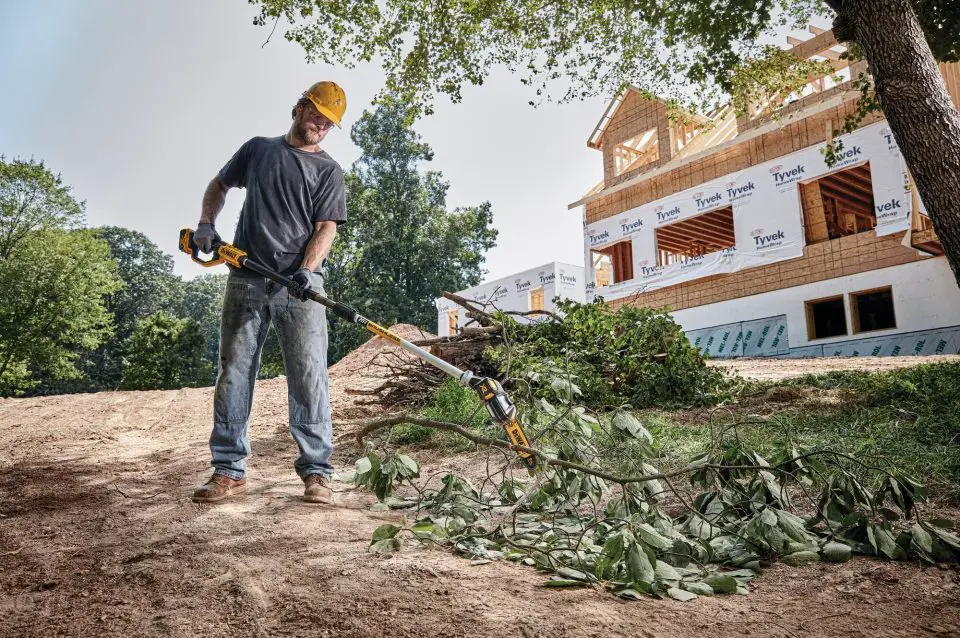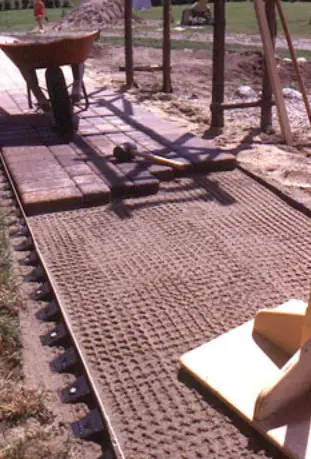Every so often a new kind of power tool begins to become mainstream, but it can take a while for homeowners to discover the advantages. Something generically called a pole saw is a case in point. I’ve used several kinds a lot at our place over the last few years (we have a lot of trees in the yard), and the latest models make especially good sense for anyone with trees to manage.
- Video Watch Time = 3 minutes
Let me start by showing one of my favourite cordless pole saws in action with the video above. Pole saws are electric or gas-powered tools that combine a small chainsaw head with a long arm that allows tree branches to be pruned while standing on the ground. Some models allow you to reach up 15 feet and more. Even if you only have a few trees in your yard, buying a pole saw can make financial sense. You’ll probably spend less money buying a decent pole saw than paying for just one visit from a pro. And when it comes time to cut off the branches you’ve pruned, pole saws save you from bending down, too.

These days it’s easy to find marketing messages that claim cordless electric tool performance is equal to that provided by gasoline-powered equivalents. And while it’s technically true that, say, a cordless whipper snipper can perform as powerfully as a gas version, that’s only true when comparing with the smallest of gas models. As someone who tests and uses tools all the time, I can assure you that the world is miles away from a cordless chainsaw or lawn mower that meets the power and run time of large gas models or even a medium-sized ones. But there’s good news when it comes to pole saws.
Cordless Pole Saws
Trimming most branches does not require a ton of power, and this is why cordless pole saws are every bit as useful as their gas-powered cousins. In fact, I hardly ever use my gas pole saw now that I’ve tested cordless models. The biggest advantage of cordless versions is two-fold.
First, it’s surprisingly handy not to have to fire up a gas pole saw by pulling a starter cord multiple times each pruning session. Working with a pole saw is different than with a regular chainsaw because trimming branches is usually a start-and-stop activity. You might prune a few branches, then lay the saw aside while you pull the trimmed branches away or load them on a trailer. Simply pick up a cordless pole saw, hit the trigger and start cutting. No time spent fuelling up, and no danger of flooding the engine and having to wait to start it later.

A Quieter Pole Saw
The second reason I like cordless electric pole saws is lack of loud noise. While you should always wear eye and head protection when using any kind of pole saw, cordless models won’t damage your hearing and require no hearing protection. Just bend down, pick up the saw, hit the trigger, then put the tool down again until it’s time for the next cut. I find these tools useful even for cutting branches on the ground because they eliminate the need to bend over.
Tree Trimming Trick
When it comes to using a pole saw, there are two things to keep in mind. First, you want to trim branches slightly away from tree trunks so as not to damage the bark. But for all but the smallest branches, preventing damaged bark on the trunk requires a two-stage cutting process.
Begin by trimming large and medium-sized branches a foot or so away from the trunk. This means that any bark peeling or tearing occurs on the stub of the branch as the branch hinges down and falls off as the cut nears completion. The trunk bark is left undamaged. Follow up with a second cut to remove the short stub of branch an inch or so from the trunk. Since the weight of stub is tiny, this second cut will never result in torn trunk bark.












